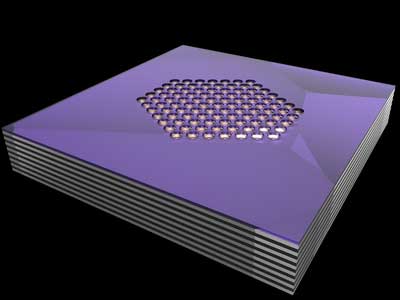| Posted: May 05, 2017 |
Physicists demonstrate photonic hypercrystals for control of light-matter interaction
(Nanowerk News) Control of light-matter interaction is central to fundamental phenomena and technologies such as photosynthesis, lasers, LEDs and solar cells.
|
|
City College of New York researchers have now demonstrated a new class of artificial media called photonic hypercrystals that can control light-matter interaction in unprecedented ways (PNAS, "Photonic hypercrystals for control of light–matter interactions").
|
 |
| Photonic hypercrystals. (Image: Tal Galfsky)
|
|
This could lead to such benefits as ultrafast LEDs for Li-Fi (a wireless technology that transmits high-speed data using visible light communication), enhanced absorption in solar cells and the development of single photon emitters for quantum information processing, said Vinod M. Menon, professor of physics in City College's Division of Science who led the research.
|
|
Photonic crystals and metamaterials are two of the most well-known artificial materials used to manipulate light. However, they suffer from drawbacks such as bandwidth limitation and poor light emission.
|
|
In their research, Menon and his team overcame these drawbacks by developing hypercrystals that take on the best of both photonic crystals and metamaterials and do even better. They demonstrated significant increase in both light emission rate and intensity from nanomaterials embedded inside the hypercrystals.
|
|
The emergent properties of the hypercrystals arise from the unique combination of length scales of the features in the hypercrystal as well as the inherent properties of the nanoscale structures.
|

